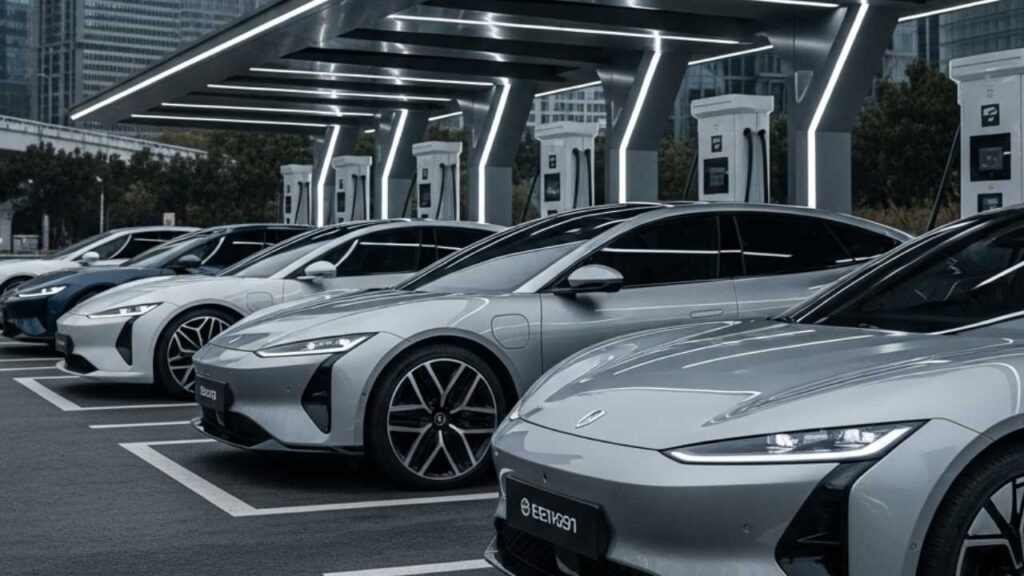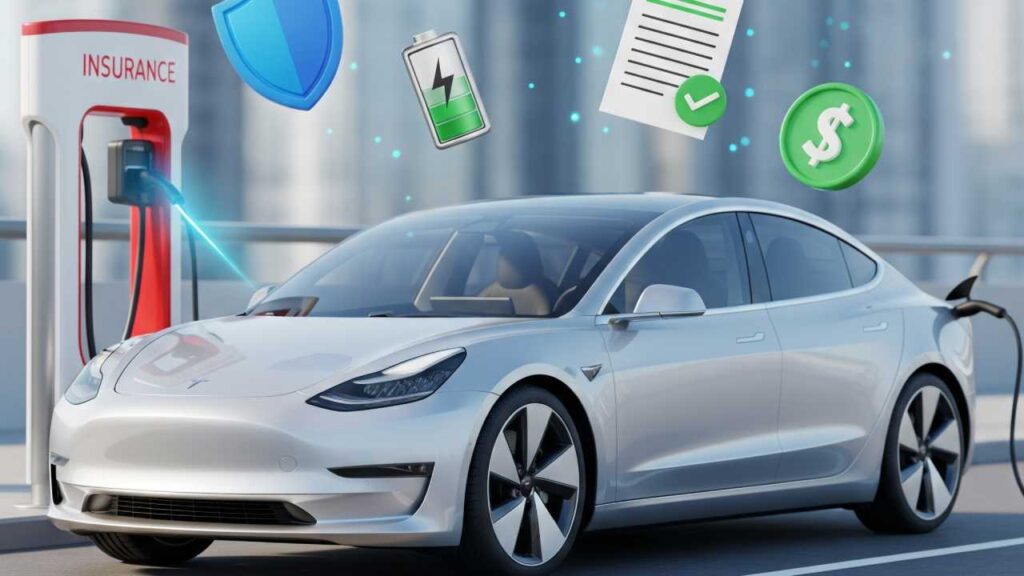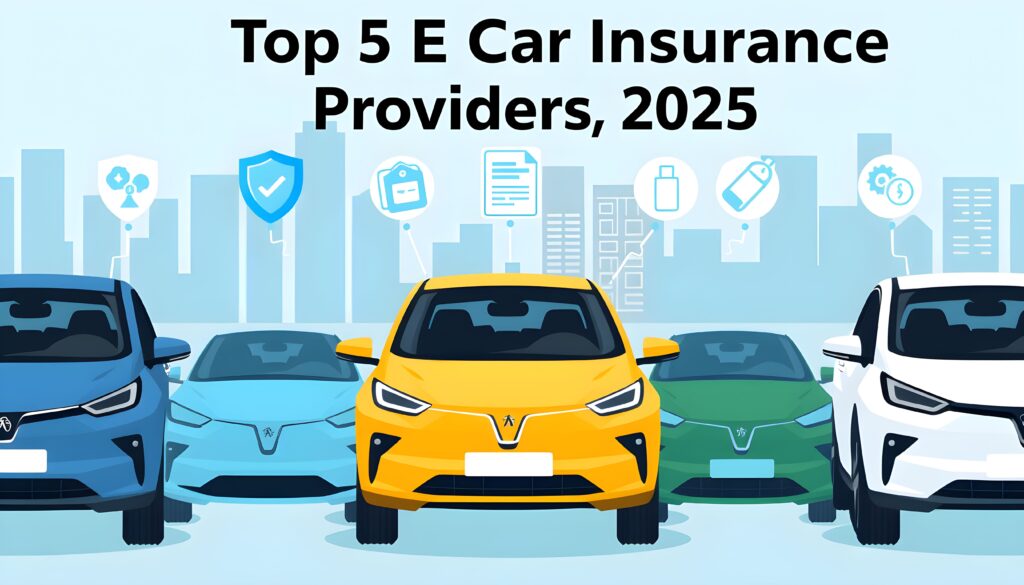
How EVs Will Change the World: The Top 5 Reasons
Electric vehicles (EVs) are more than just a trend; they represent a fundamental shift in how we think about transportation. From reducing carbon emissions to enhancing convenience, EVs are poised to revolutionize the automotive industry and beyond. In this article, we’ll explore the top five ways EVs will change the world, backed by real-world examples and reliable data. Whether you’re a tech enthusiast, an eco-warrior, or simply curious about the future of transportation, this article will provide valuable insights into the transformative power of EVs.
1. Environmental Impact: A Greener Future
Reducing Carbon Emissions: One of the most significant benefits of EVs is their positive impact on the environment. Unlike traditional internal combustion engine vehicles, which emit harmful pollutants, EVs produce zero tailpipe emissions. This reduction in emissions can have a substantial effect on air quality and climate change. For example, according to the U.S. Environmental Protection Agency (EPA), a typical passenger vehicle emits about 4.6 metric tons of carbon dioxide annually. EVs can significantly reduce this figure, contributing to a cleaner, healthier planet.
Case Study: The City of Oslo, Norway: Oslo, a city known for its commitment to sustainability, has seen a dramatic increase in EV adoption. The city’s policy of offering free parking, toll exemptions, and access to bus lanes for EVs has encouraged residents to switch to electric vehicles. As a result, Oslo has become one of the world’s leading cities in EV adoption, with EVs making up over 60% of new car sales. This shift has led to a noticeable improvement in air quality and a reduction in greenhouse gas emissions, demonstrating the real-world impact of EV adoption.
2. Economic Benefits: Lower Costs and New Opportunities
Cost Savings on Fuel and Maintenance: Ev owners can save a considerable amount of money on fuel and maintenance costs. Electricity is generally cheaper than gasoline, and EVs have fewer moving parts, reducing the need for expensive repairs and maintenance. For instance, the average cost to charge an EV is about $0.12 to $0.14 per kilowatt-hour (kWh), while the average cost of gasoline is around $3.00 per gallon. Over the lifetime of the vehicle, these savings can add up to thousands of dollars.
Job Creation and Economic Growth: The rise of EVs is also creating new economic opportunities. The EV industry is projected to create millions of jobs in manufacturing, infrastructure, and related services. For example, the construction of charging stations, the development of new battery technologies, and the expansion of supply chains are all driving job growth. According to a report by the International Energy Agency (IEA), the global EV market could support over 10 million jobs by 2030.
3. Technological Advancements: Innovation and Connectivity
Advancements in Battery Technology: One of the key drivers of EV adoption is the rapid advancement in battery technology. Modern EVs can travel longer distances on a single charge, thanks to improvements in battery energy density and efficiency. For example, the latest Tesla models can achieve ranges of over 300 miles on a single charge, making them practical for long-distance travel. Additionally, the development of fast-charging technologies is reducing the time it takes to recharge an EV, making them more convenient for everyday use.
Smart and Connected Vehicles: EVs are at the forefront of the connected vehicle revolution. Many modern EVs come equipped with advanced features such as GPS navigation, remote diagnostics, and over-the-air software updates. These features not only enhance the driving experience but also improve safety and efficiency. For instance, Tesla’s Autopilot system uses a combination of cameras, sensors, and machine learning algorithms to assist drivers and reduce the risk of accidents.
4. Energy Independence: Reducing Reliance on Fossil Fuels
Reducing Dependency on Oil: The widespread adoption of EVs can help reduce a country’s dependence on imported oil, which can have significant economic and geopolitical implications. By shifting to electric transportation, nations can reduce their vulnerability to oil price fluctuations and supply disruptions. For example, the United States, which imports a significant amount of oil, could benefit greatly from a transition to EVs. According to the U.S. Energy Information Administration (EIA), the U.S. imports about 4.6 million barrels of crude oil per day, and a shift to EVs could significantly reduce this figure.
Renewable Energy Integration: EVs are also complementary to renewable energy sources such as solar and wind power. The ability to charge EVs using renewable energy can further reduce carbon emissions and promote the transition to a more sustainable energy system. For instance, many EV owners are installing home solar panels to charge their vehicles, creating a self-sustaining energy loop. This integration of renewable energy and EVs is a key component of the future energy landscape.
5. Social and Cultural Impact: Changing the Way We Live
Urban Planning and Transportation: The rise of EVs is influencing urban planning and transportation policies. Cities are increasingly investing in EV charging infrastructure, bike lanes, and pedestrian-friendly spaces to accommodate the growing number of electric vehicles. This shift is not only improving the quality of life for city residents but also promoting more sustainable urban development. For example, the city of Amsterdam has launched several initiatives to encourage EV adoption, including the installation of thousands of charging points and the implementation of car-free zones in the city center.
Shift in Consumer Behavior: As EVs become more mainstream, they are changing consumer behavior and expectations. More people are opting for electric vehicles not just because of the environmental benefits but also because of the superior driving experience, lower costs, and advanced features. This shift in consumer behavior is driving automakers to accelerate their EV offerings and invest in research and development. For instance, companies like General Motors and Ford have announced plans to produce a wide range of electric vehicles, signaling a major shift in the automotive industry.
Conclusion
The adoption of electric vehicles is poised to bring about a profound transformation in the way we live, work, and travel. From their environmental and economic benefits to the technological advancements and social impact, EVs are reshaping the future of transportation. If you’re considering making the switch to an electric vehicle, now is a great time to explore your options. Visit a local dealership, research available models, or use a comparison website to find the perfect EV for your needs.
FAQ
What are the main benefits of electric vehicles?
The main benefits of electric vehicles include reduced carbon emissions, lower fuel and maintenance costs, technological advancements, and a reduction in dependency on fossil fuels.
How far can an electric vehicle travel on a single charge?
The range of an electric vehicle varies depending on the model. Some modern EVs can travel over 300 miles on a single charge, while others have ranges of around 200 miles or less. Factors such as driving conditions and climate also affect the range.
Are electric vehicles more expensive than traditional cars?
The initial cost of an electric vehicle can be higher than that of a traditional car, but the long-term savings on fuel and maintenance can offset this difference. Additionally, many governments offer incentives and tax credits to make EVs more affordable.
What is the environmental impact of electric vehicle batteries?
While the production of electric vehicle batteries does have an environmental impact, the overall carbon footprint of an EV is generally lower than that of a traditional car over its lifetime. Advances in battery recycling and the use of renewable energy for charging are further reducing this impact.
How long does it take to charge an electric vehicle?
The time it takes to charge an electric vehicle depends on the type of charger and the size of the battery. A Level 1 charger (120V) can take several hours to fully charge an EV, while a Level 2 charger (240V) can charge an EV in a few hours. Fast chargers (DC) can charge an EV to 80% in about 30 minutes.





